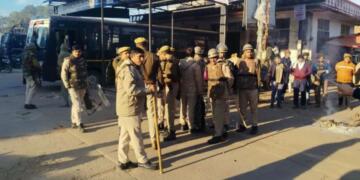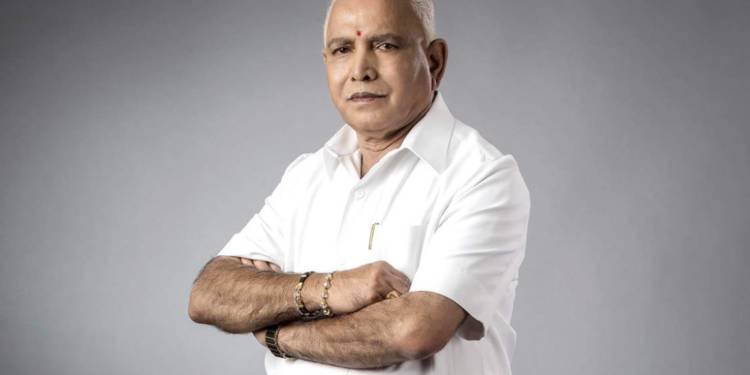What happens when the man in power is strongly placed and the establishment opposed to that man cannot match his charisma? The establishment starts drawing false equivalences and making comparisons with countries placed in a completely different position to drag down the man in power. This is what has happened amidst reports of New Zealand being declared a Coronavirus-free country, regardless of the fact that the struggle of Bengaluru alone has turned out more successful.
Ever since New Zealand’s Prime Minister Jacinda Ardern declared that the country has zero active cases, the entire establishment has gone into an overdrive praising the Kiwi model which is, of course, brilliant for a country like New Zealand. But which for some pressing reasons- high population density, lesser economic prosperity and greater poverty cannot be applied to India.
New Zealand’s model to combat Coronavirus, though clearly successful, is not something that should be idolised in India nor should it be seen as a model that is more effective than India’s model.
Case in point being India’s Bengaluru- the Silicon Valley of India that has been able to contain the Coronavirus Pandemic. A little analysis of the Coronavirus situation in New Zealand and Bengaluru would reveal how the ‘Silicon Valley of India’ faced a much bigger task and fought a much bigger battle against the COVID-19 Pandemic.
Starting with some crucial numbers- New Zealand has a population of about 50 lakhs, which is just slightly more than the total number of COVID-19 tests conducted across India, yet it recorded 1,150 cases and 22 deaths. On the other hand, Bengaluru being the capital of Karnataka and a major IT hub of India has a population of 1.25 crores yet it recorded just 450 cases and 13 deaths.
NZ has a population of just 50 lakh. Smaller than the average Indian city.
It still had 1,150 cases. 22 deaths.Bengaluru has more than double the population, 1.25 crores. It has reported less than 450 cases. 13 deaths.
— Rishvanjas Rishi Raghavan (@RishvanjasR) June 8, 2020
Let us not lose sight of the fact that Bengaluru is just a city of an average size that is spread over 709 square kilometres while New Zealand is a full-sized country spread over 268,021 square kilometres.
Therefore, the population density of Bengaluru comes out to be around 17,000 per square kilometre which is almost 944 times higher than New Zealand’s population density of 18 people per sqaure kilometre.
In terms of economic prosperity, the stakes were always higher in India- New Zealand has a low poverty rate, less than 10 per cent to be precise. Bengaluru has a higher poverty rate and a GDP which is 20 per cent bigger than New Zealand. Of course, Prime Minister Jacinda Ardern had the luxury of shutting down economic activity without pushing many into vagrancy and destitution. Chief Minister Yediyurappa never had this option.
But the issue is not only that of difference in population density and economic prosperity but also that of geographical location. New Zealand is a borderless, isolated island while Bengaluru is the IT hub of India- a multi-cultural centre where people from every part of India and other countries of the world interact with each other, thus, making it more vulnerable to the ongoing Pandemic.
Oksana Pyzik, Senior Teaching Fellow at University College London’s School of Pharmacy said, “As a remote island nation that is sparsely populated, mass testing and closing the borders to drive out COVID-19 would be difficult to replicate elsewhere to the same degree of success.”
Bengaluru had to be careful not to let international travellers become a major source of Coronavirus infection in the Karnataka Capital. This requires a major tracking exercise.
Karnataka Deputy Chief Minister CN Ashwath Narayan said, “When we realised that more people will be flying into Bengaluru from Covid-affected countries, we had to act in a cohesive manner. We roped in all agencies and made it clear that there should be no chinks in the armour. About 1.4 lakh international travellers were screened and their movements were monitored. Their primary and secondary contacts were kept under observation.”
He added, “Coordination between the civic agency and health and home departments was effective and the spread of infection from the travellers was minimal.”
The COVID-affected zones were monitored closely, the Bengaluru Police implemented the lockdown strictly and most importantly contact tracing was carried out effectively. M Lokesh, Special Commissioner and COVID-19 surveillance in-charge said, “Every time a case was detected, we launched contact tracing. We didn’t leave anything to chance.”
Containing the outbreak in Bengaluru was a herculean task, and certainly more challenging than containing it in an isolated island country like New Zealand. There is nothing that we have to learn from New Zealand because the challenge we are facing is much bigger than the one that New Zealand faced.
This is not to deny that New Zealand’s model to combat worked for New Zealand, but there is nothing that India can learn out of New Zealand’s experience in battling COVID-19 either and thus there is no need of being in awe of a Coronavirus-free New Zealand.

































